Workplace Safety Statistics in Australia

.png)
One of the core functions of Safe Work Australia (SWA) is to develop and maintain an evidence base to inform WHS and workers’ compensation policies and practices.
Yearly, it publishes key work health and safety (WHS) figures that present an overview of the latest national work-related injury, disease and fatality statistics.
Update: The 'Key Work Health and Safety Statistics Australia 2023' data is out: https://data.safeworkaustralia.gov.au/insights/key-whs-stats-2023
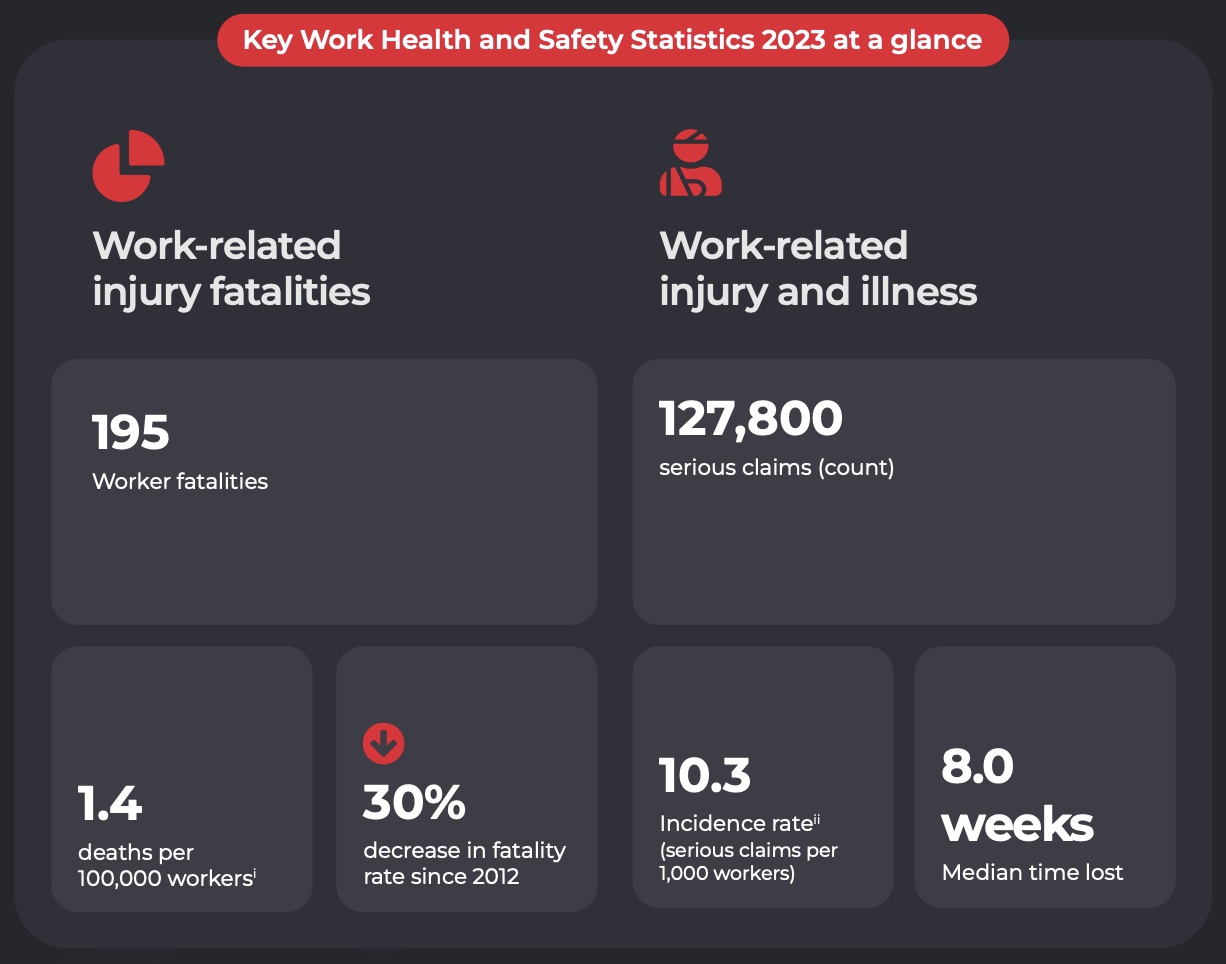
For the most up-to-date WHS data, please refer to the SWA's August 2023 launch of https://data.safeworkaustralia.gov.au, where "data to analyse and research work health and safety and workers' compensation trends across Australia" are compiled in an interactive format.
Disclaimer: The key statistics and images below are directly taken from and attributed to SWA under Creative Commons 4.0. No copyright infringement is intended.
Work-related fatalities
- 190 Australian workers died at work due to work-related causes
- 1.4 deaths per 100,000 workers over the past five years (2018 to 2022)
Overall, documented fatalities due to occupational causes have been decreasing since the 2007 peak, but are slowly rising again since the 2018 trough:
.png)
(Excludes work-related fatalities resulting from diseases, natural causes and suicides)
From 2016 to 2021, way more males suffered work-related deaths than females.
2021:
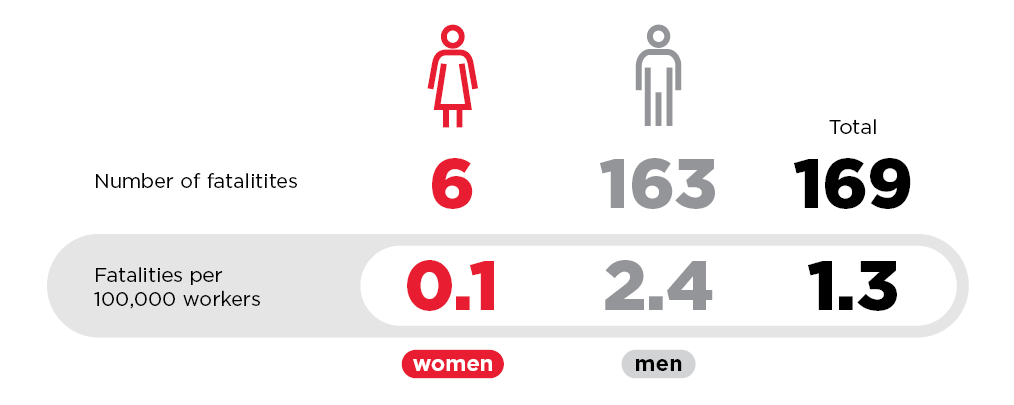
| 2020 | 2019 | 2018 | 2017 | 2016 |
.png) |
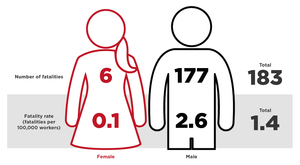 |
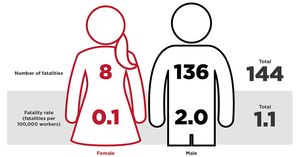 |
 |
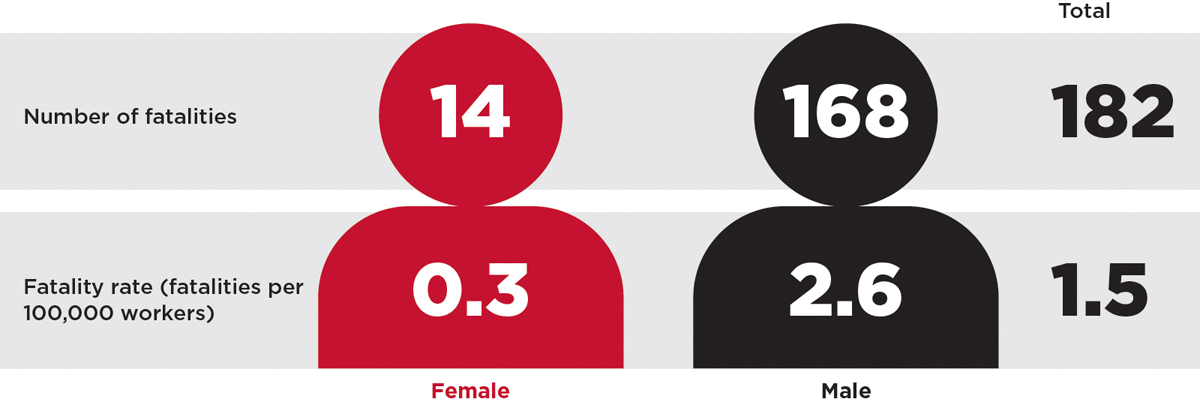 |
The highest number of work-related deaths were recorded in New South Wales.
2021:
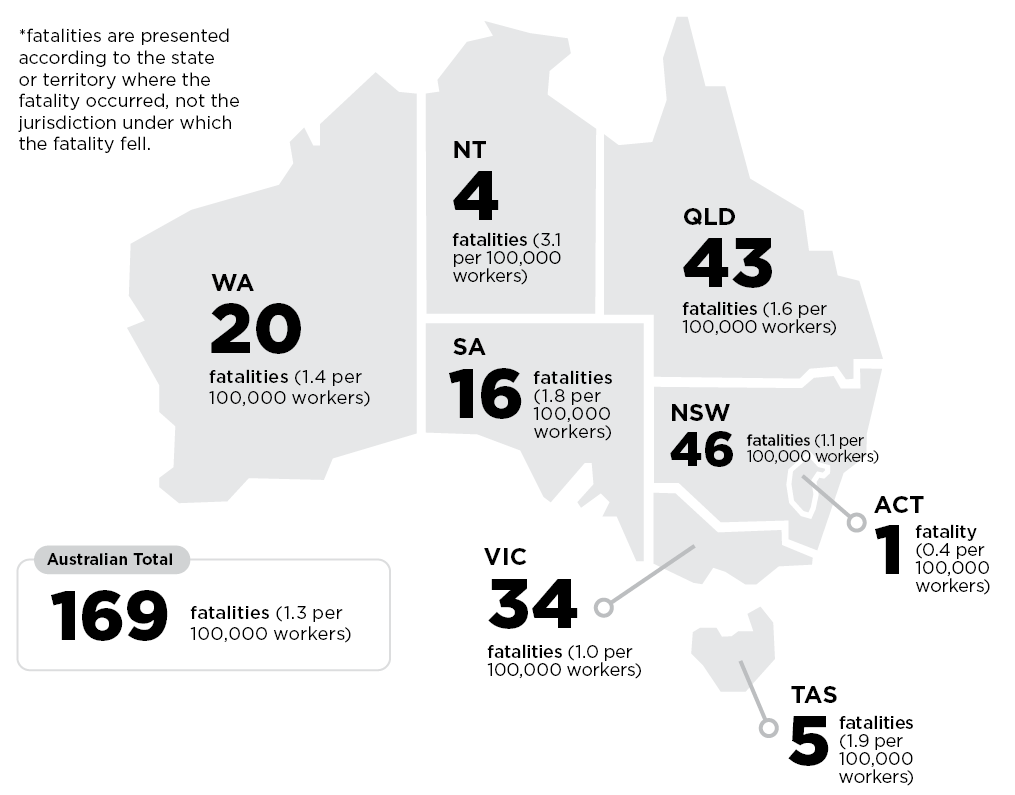
| 2020 | 2019 | 2018 | 2017 | 2016 |
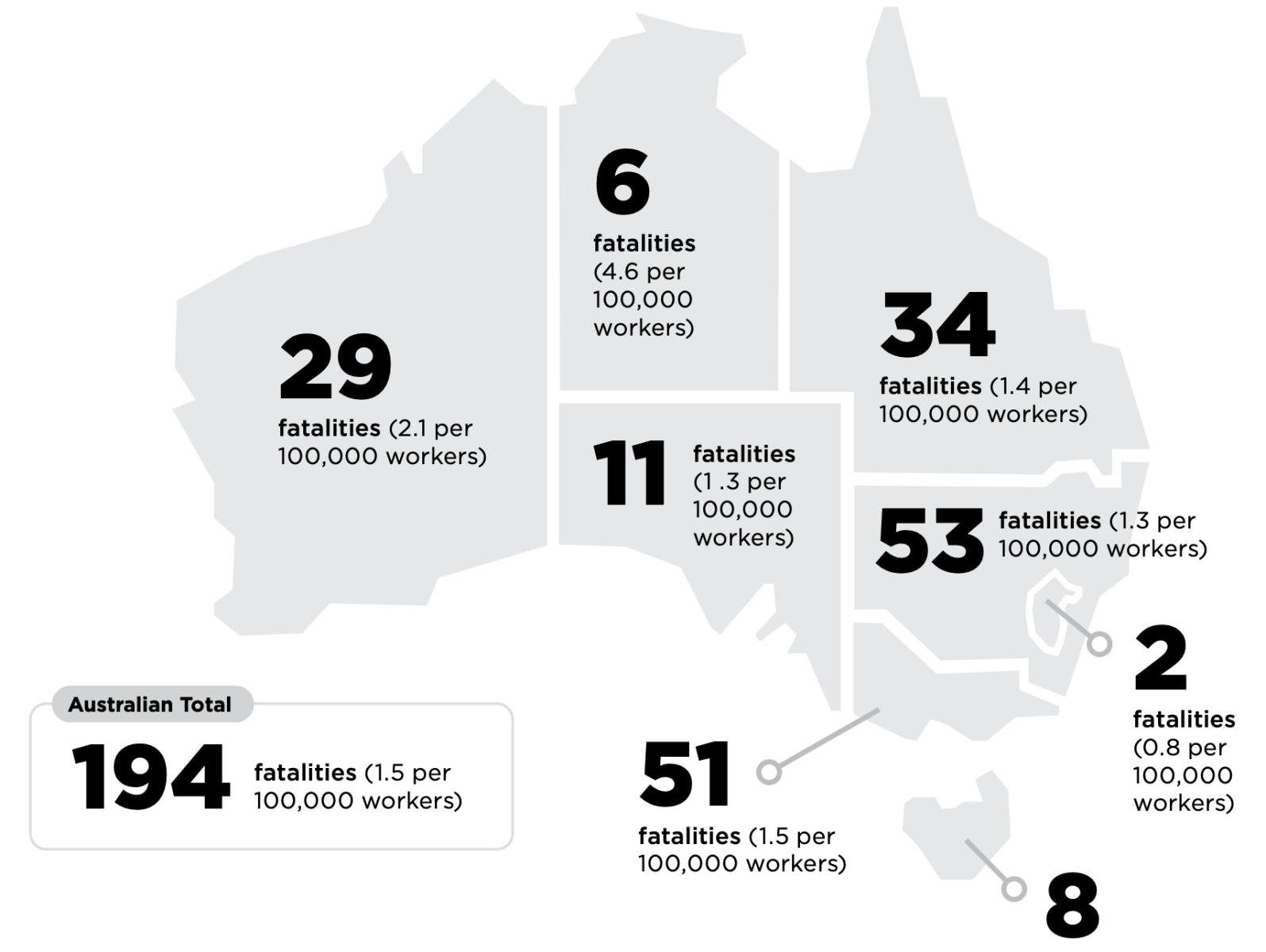 |
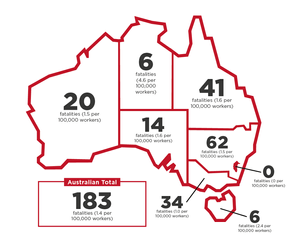 |
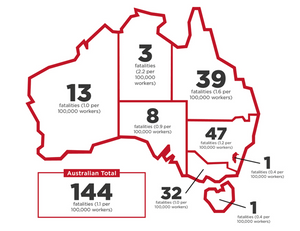 |
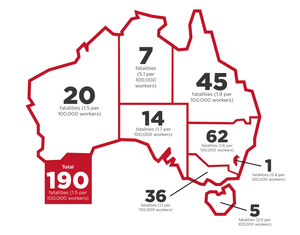 |
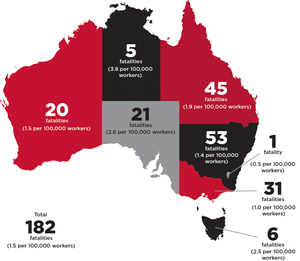 |
Most deaths were the result of vehicle collisions (eg. car, truck, aircraft, boat, loader, tractor, quad bike etc.). From 2016 to 2021, the third leading cause of death was falls from heights (except in 2019, when it was tied with “being hit by moving objects” as the second leading cause of death).
2021:
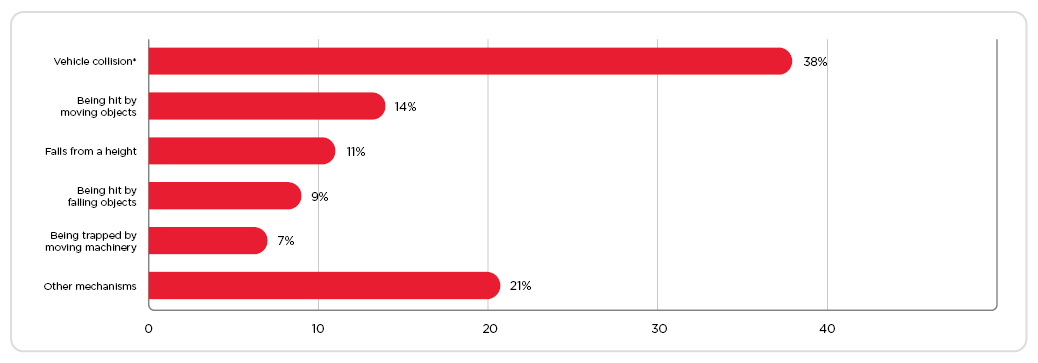
| 2020 | 2019 | 2018 | 2017 | 2016 |
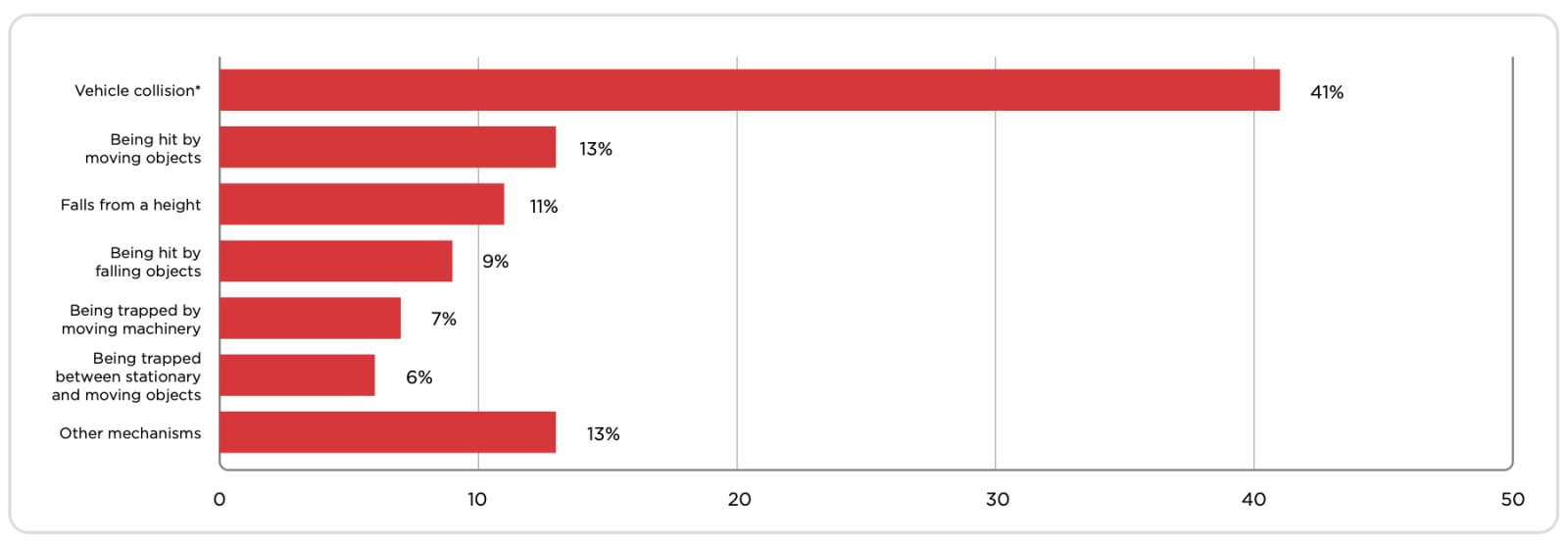 |
 |
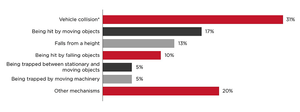 |
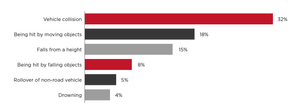 |
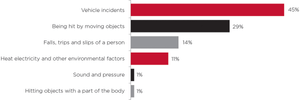 |
Most fatality victims were machine operators and drivers or, essentially, those who work with or near vehicles (top cause of death, see the previous figure).
2021:
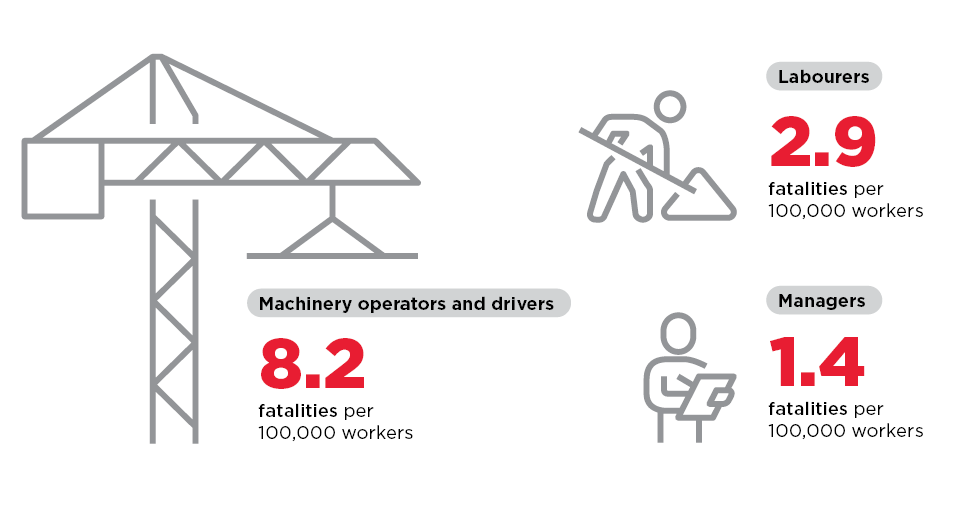
| 2020 | 2019 | 2018 | 2017 | 2016 |
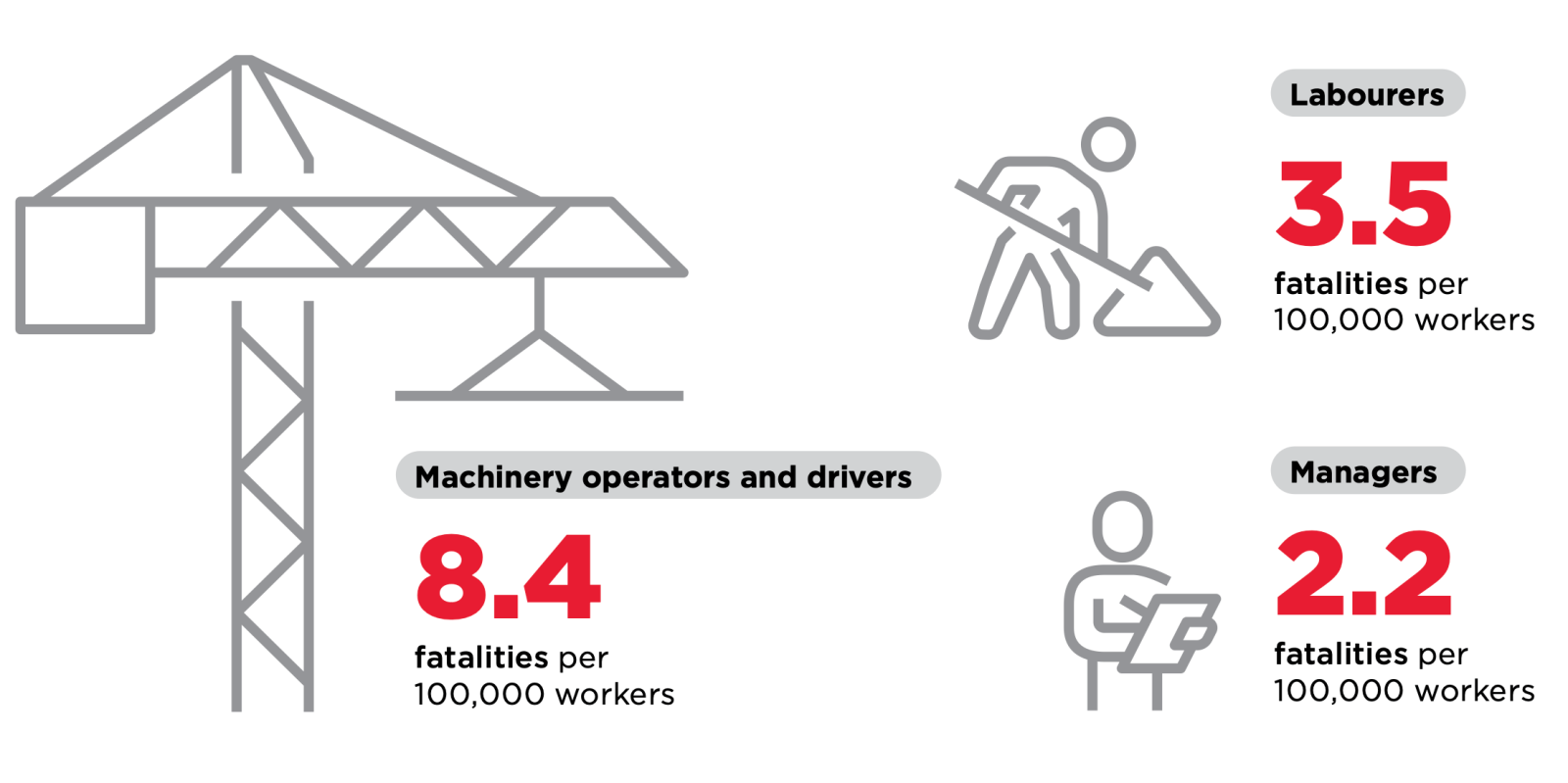 |
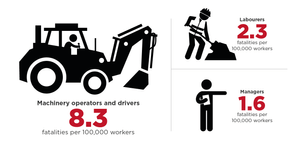 |
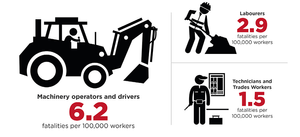 |
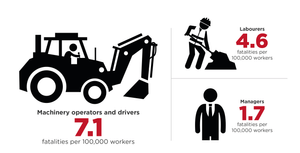 |
 |
“Agriculture, forestry and fishing” remain the industries where most fatalities were recorded.
2021:
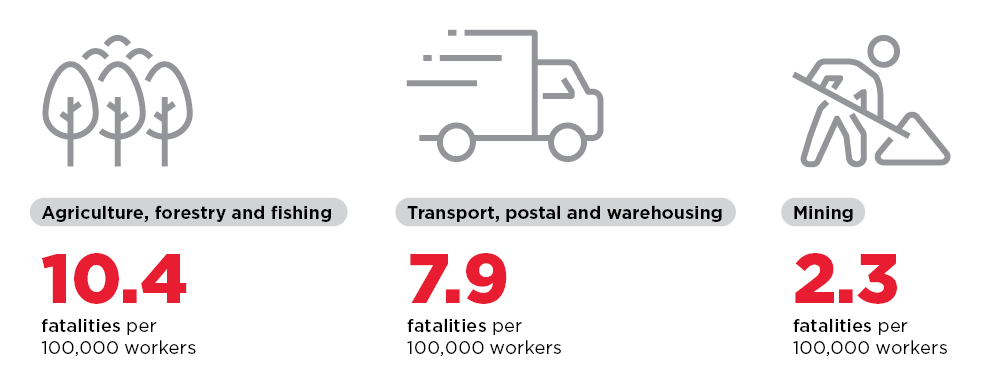
| 2020 | 2019 | 2018 | 2017 | 2016 |
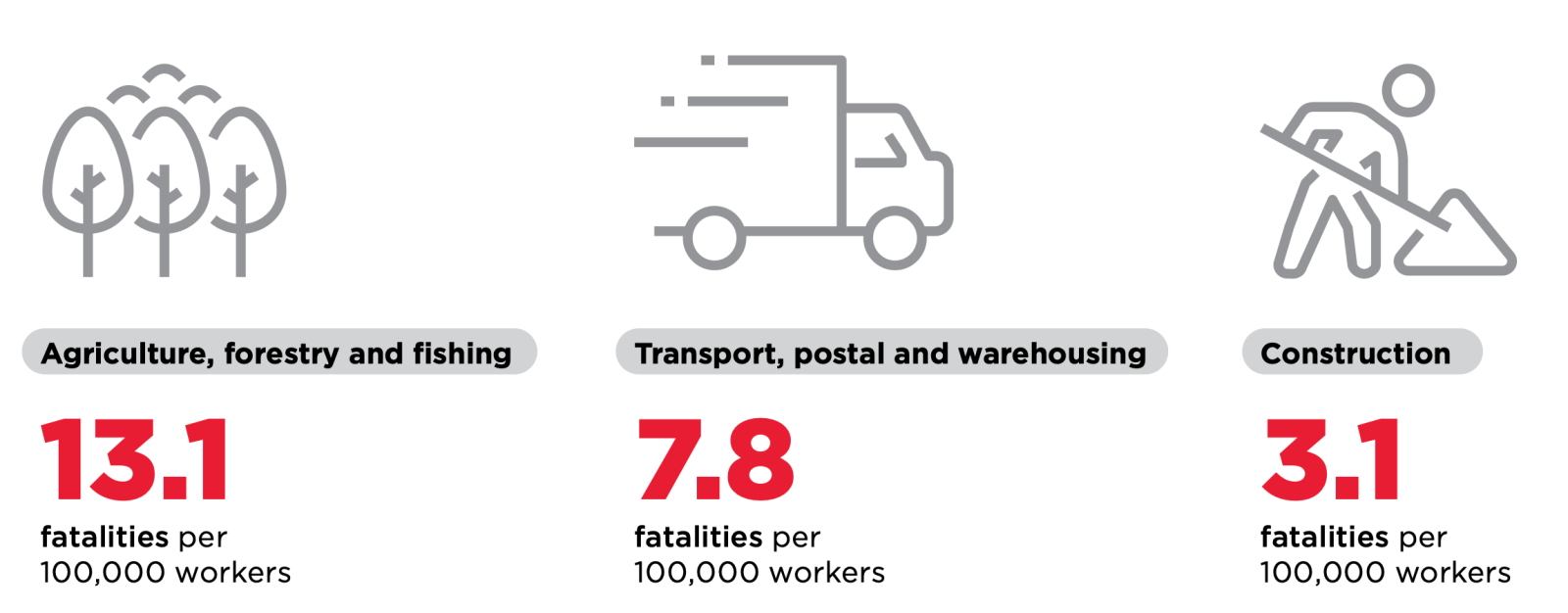 |
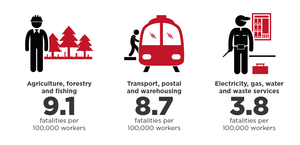 |
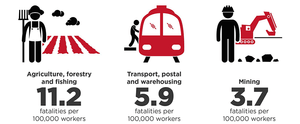 |
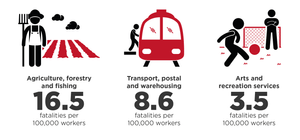 |
 |
Work-related injuries and diseases
Here are the 2022 figures from SWA based on preliminary estimates.
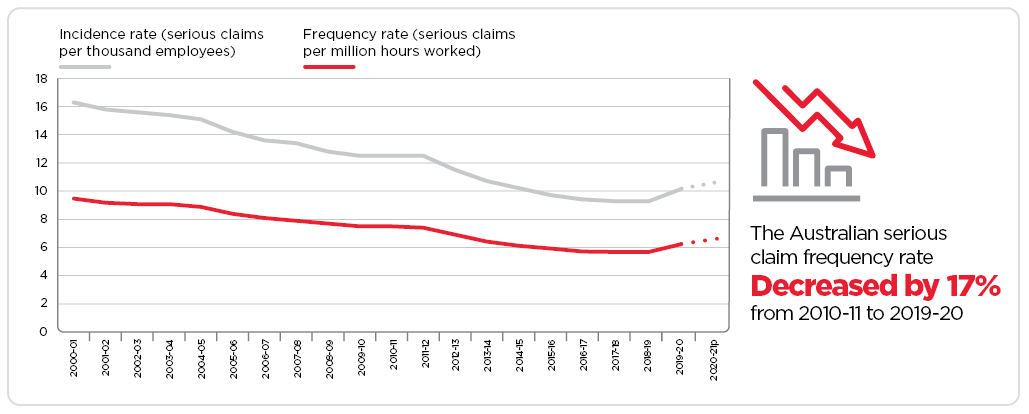
There were significantly more serious claims filed compared to the preceding years:
| 2020 - 2021 | 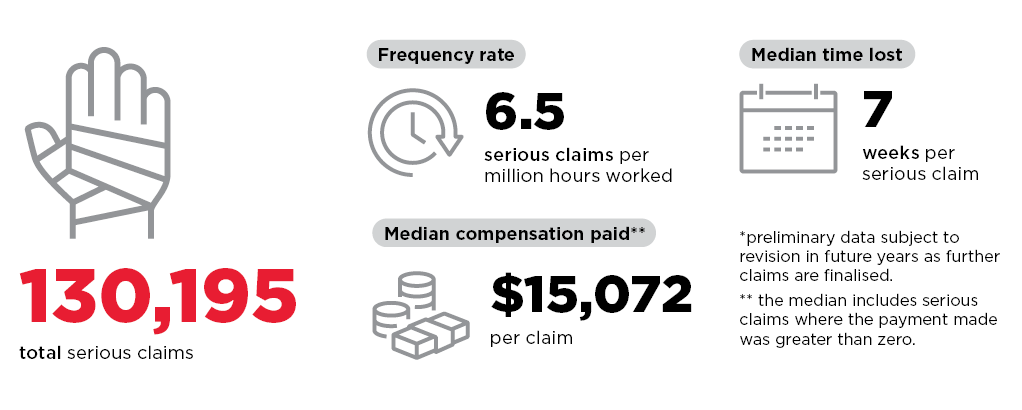 |
| 2019 - 2020 | 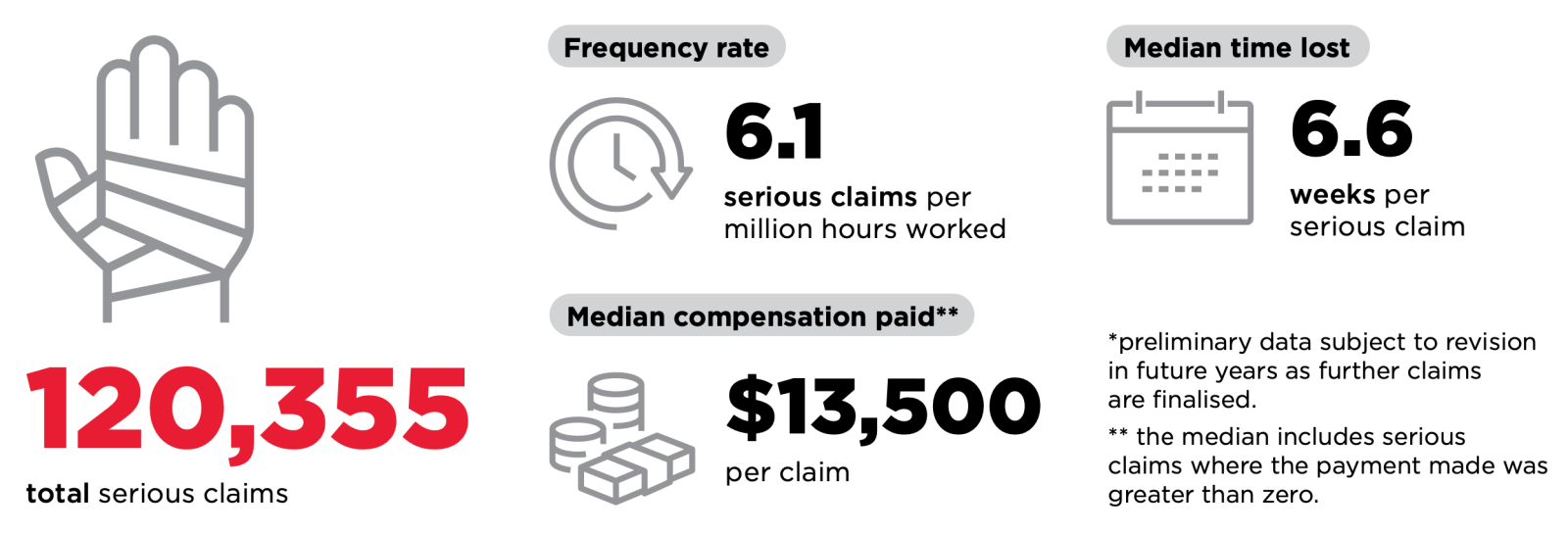 |
| 2018 - 2019 | 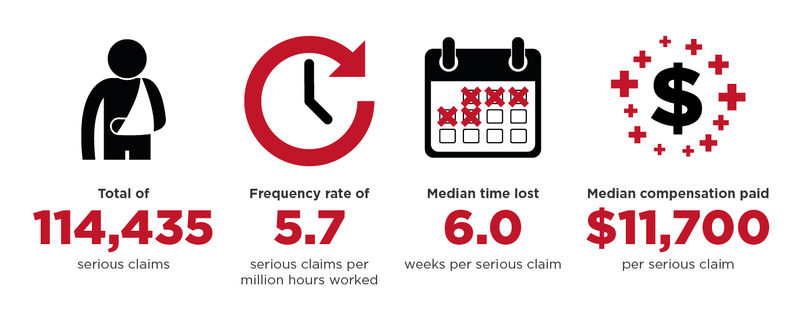 |
| 2017 - 2018 | 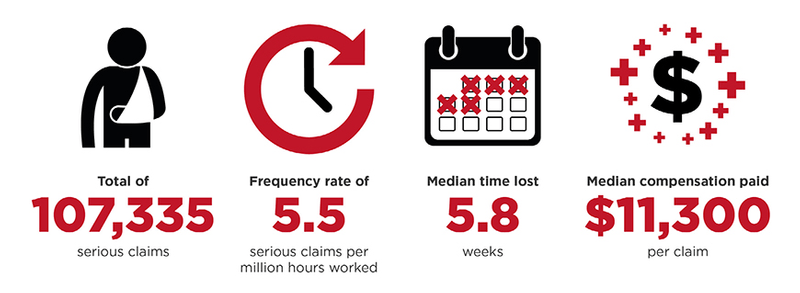 |
| 2016 - 2017 | 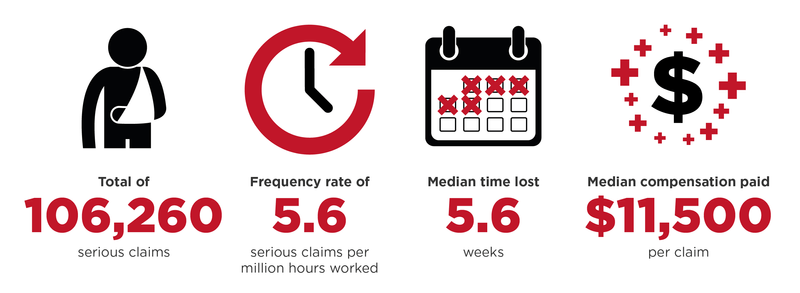 |
“Body stressing” and “falls, slips and trips” have remained the top two mechanisms of incident since 2016.
2021:
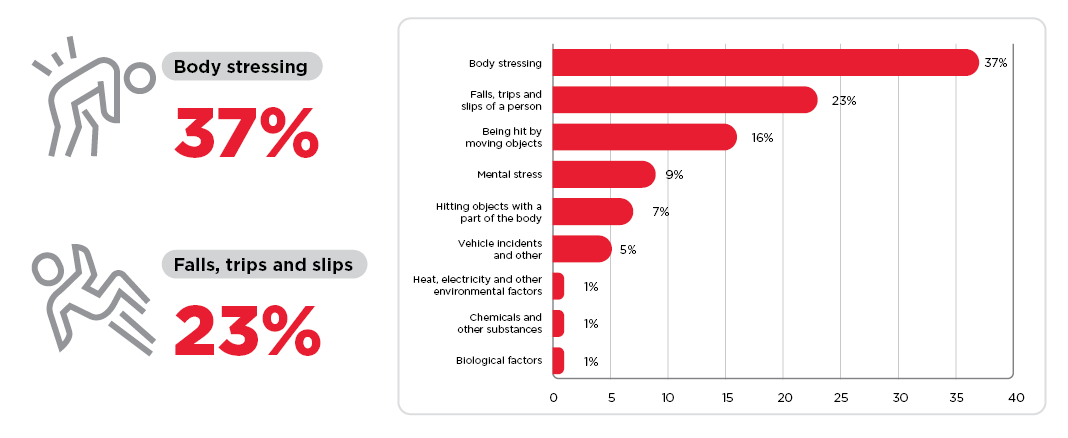
| 2019 - 2020 | 2018 - 2019 | 2017 - 2018 | 2016 - 2017 |
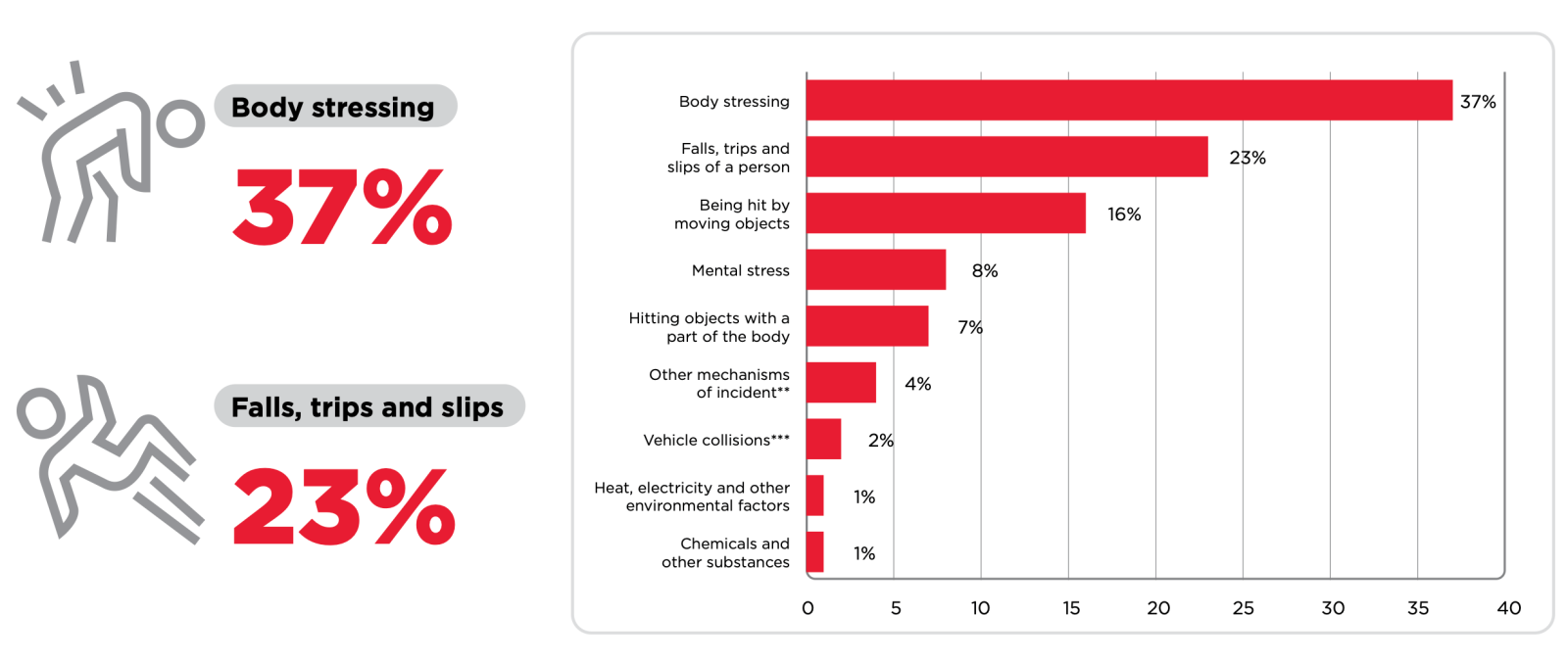 |
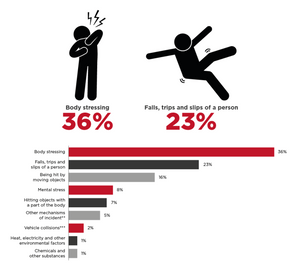 |
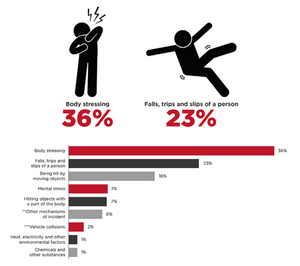 |
.png) |
Roughly 7 out of 10 serious claims filed resulted in injuries, most of which were classified as traumas to the joints, ligaments, muscles and tendons.
2021:

| 2019 - 2020 | 2018 - 2019 | 2017 - 2018 | 2016 - 2017 |
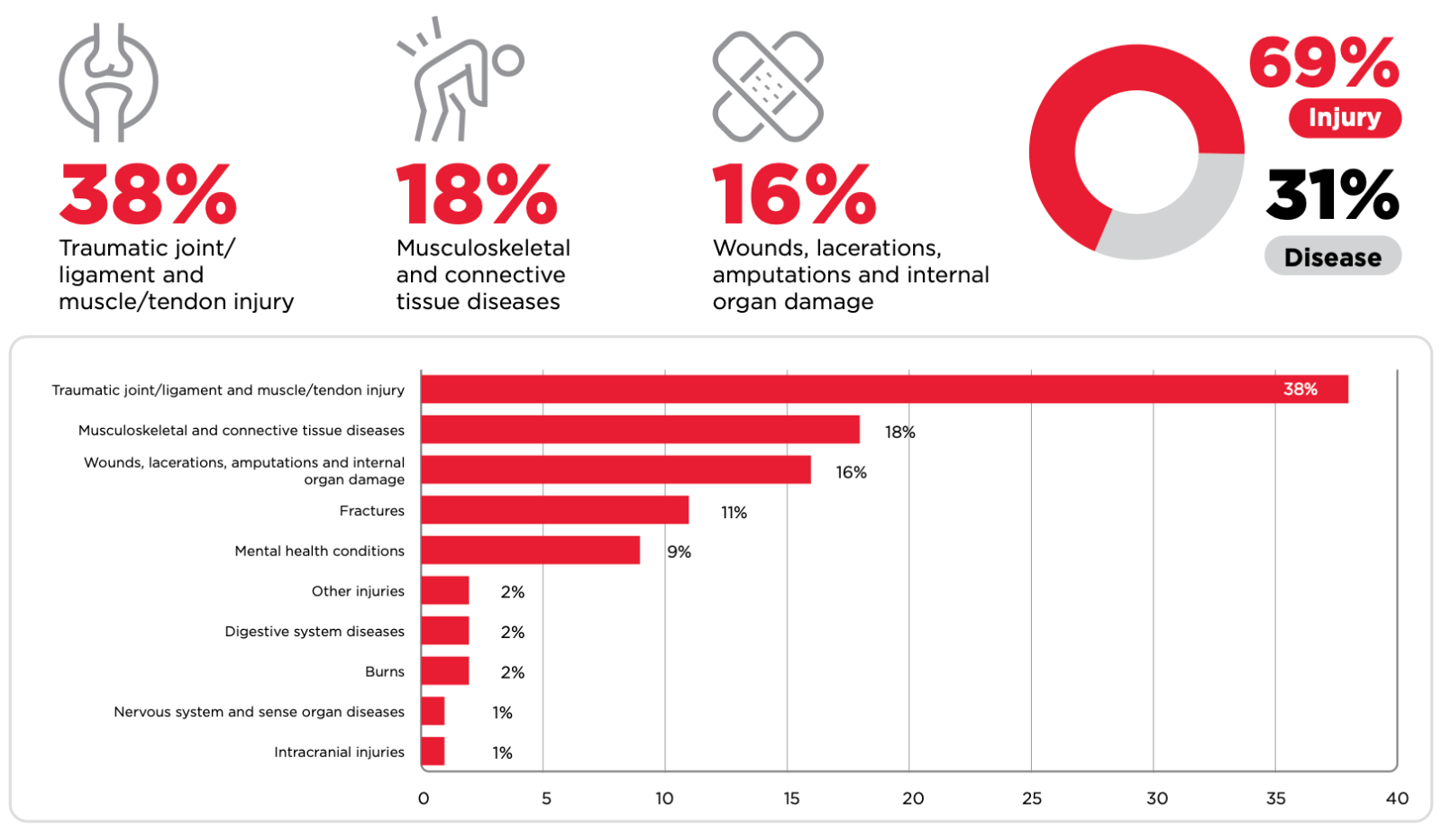 |
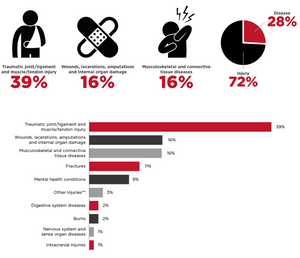 |
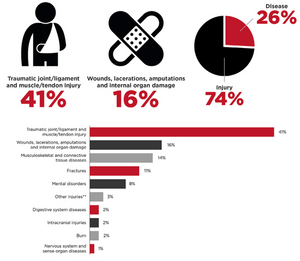 |
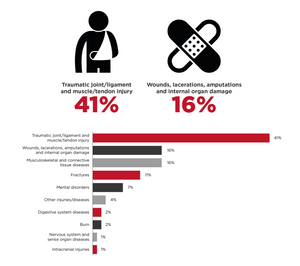 |
The injuries were still mostly to the upper and lower limbs.
2021:
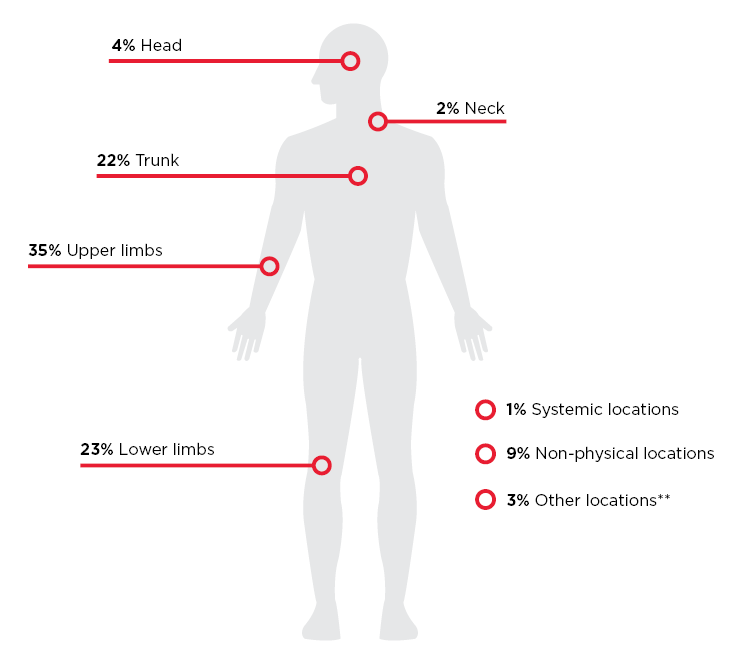
| 2019 - 2020 | 2018 - 2019 | 2017 - 2018 | 2016 - 2017 |
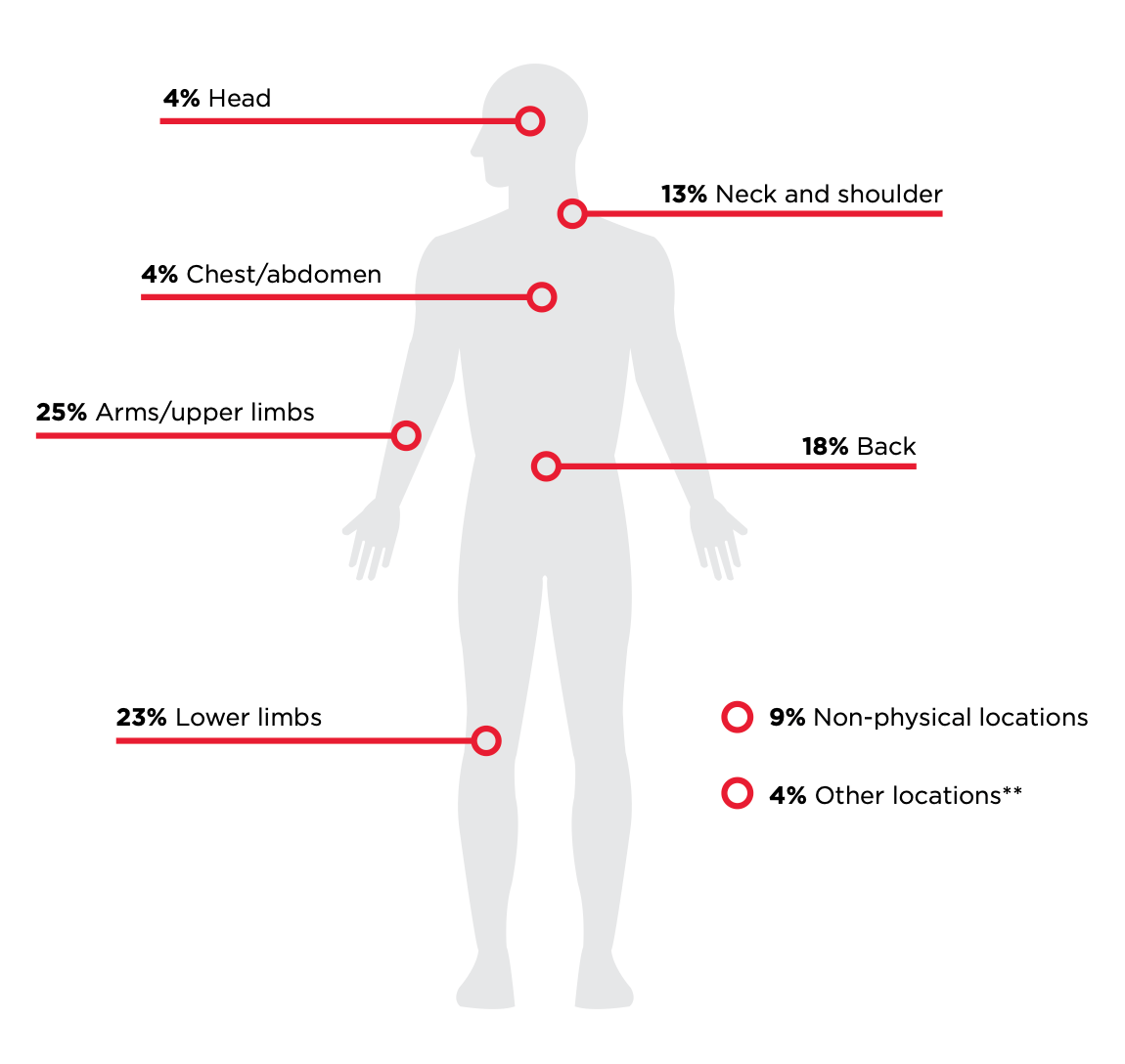 |
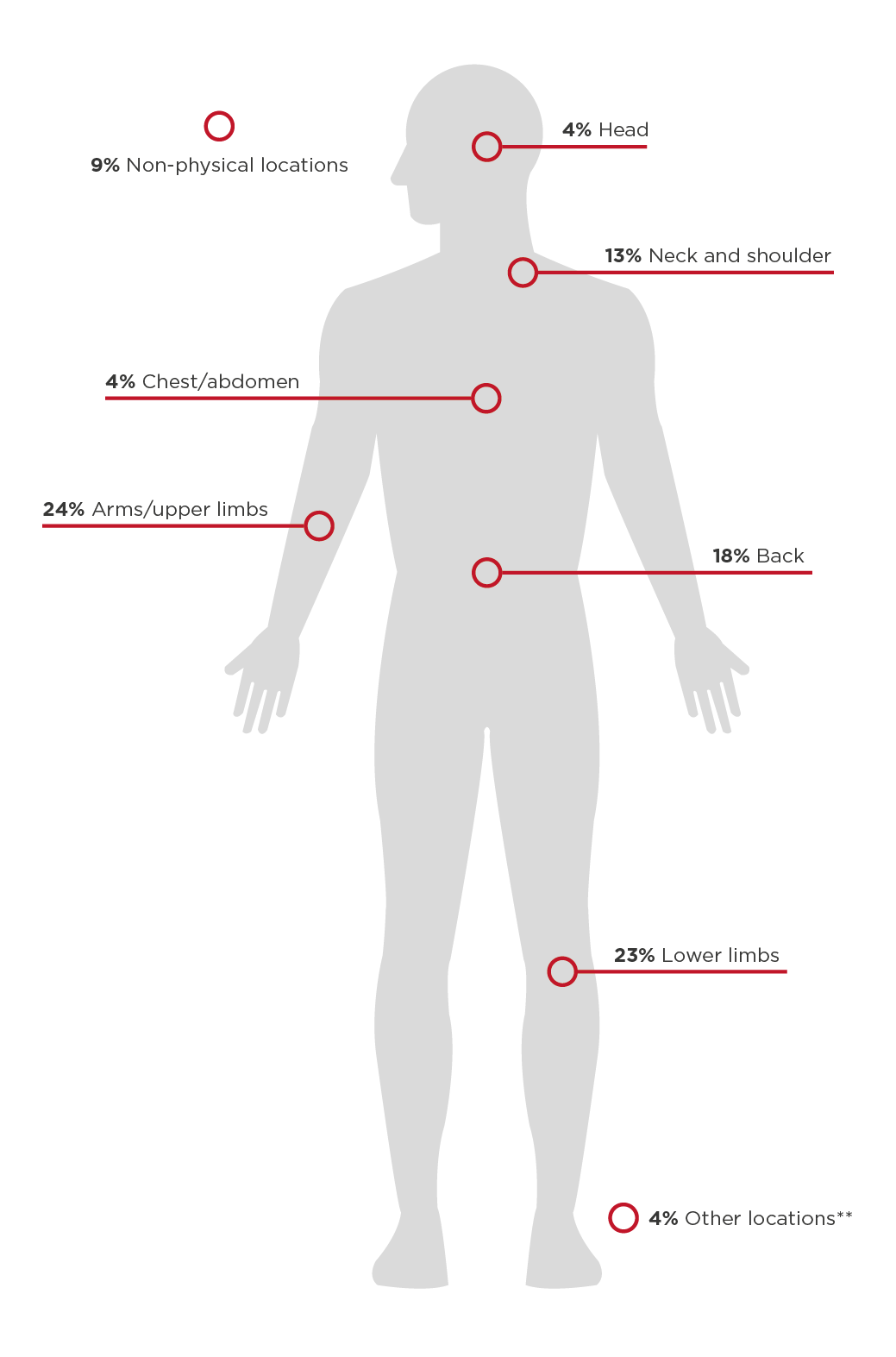 |
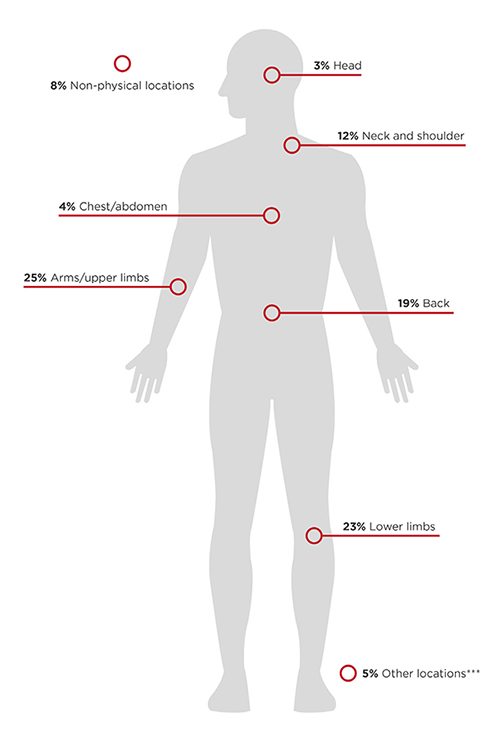 |
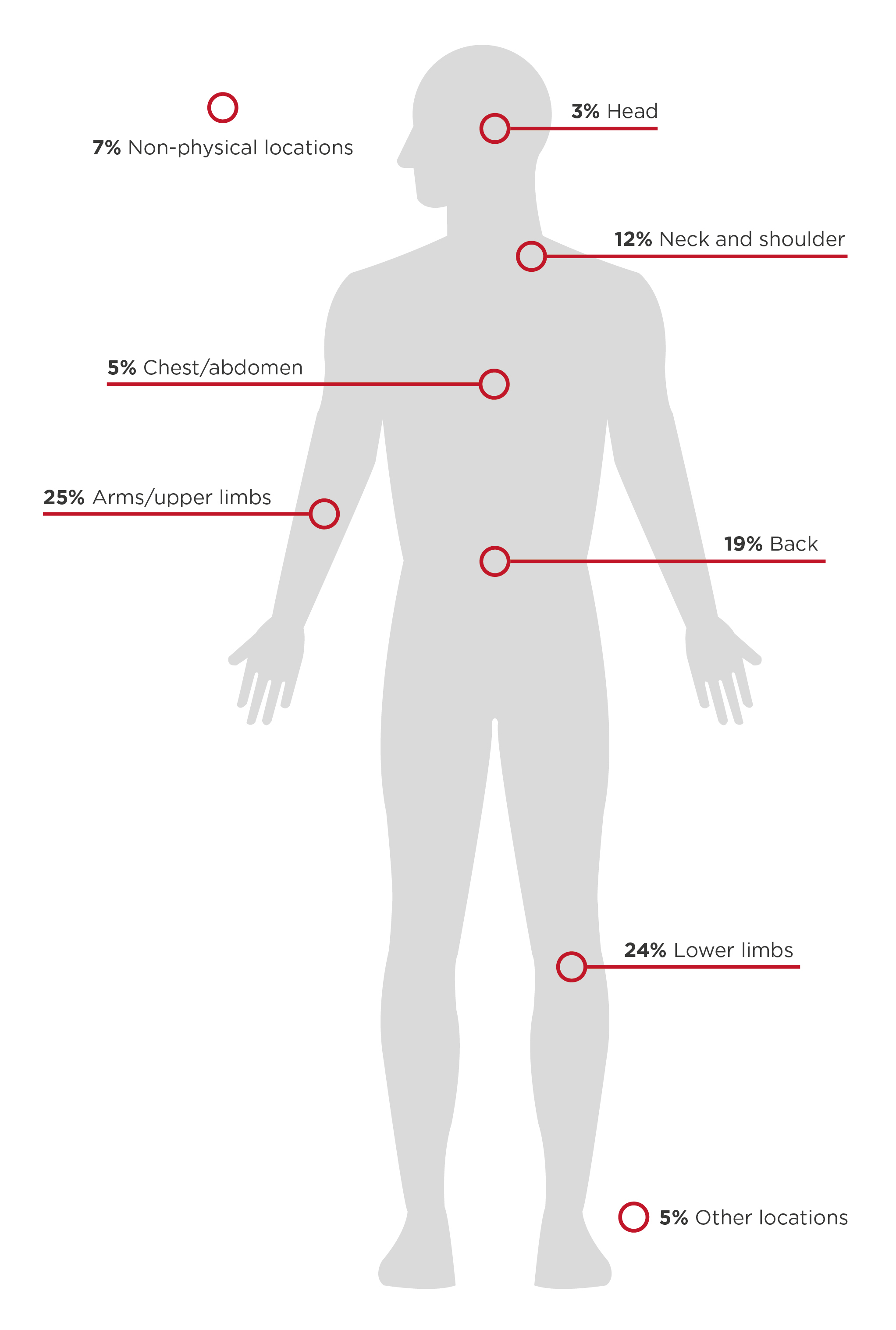 |
In terms of occupation, those who filed for serious claims were mostly labourers, followed by community and personal service workers and machinery operators and drivers.
| 2019 - 2020 | 2018 - 2019 | 2017 - 2018 | 2016 - 2017 |
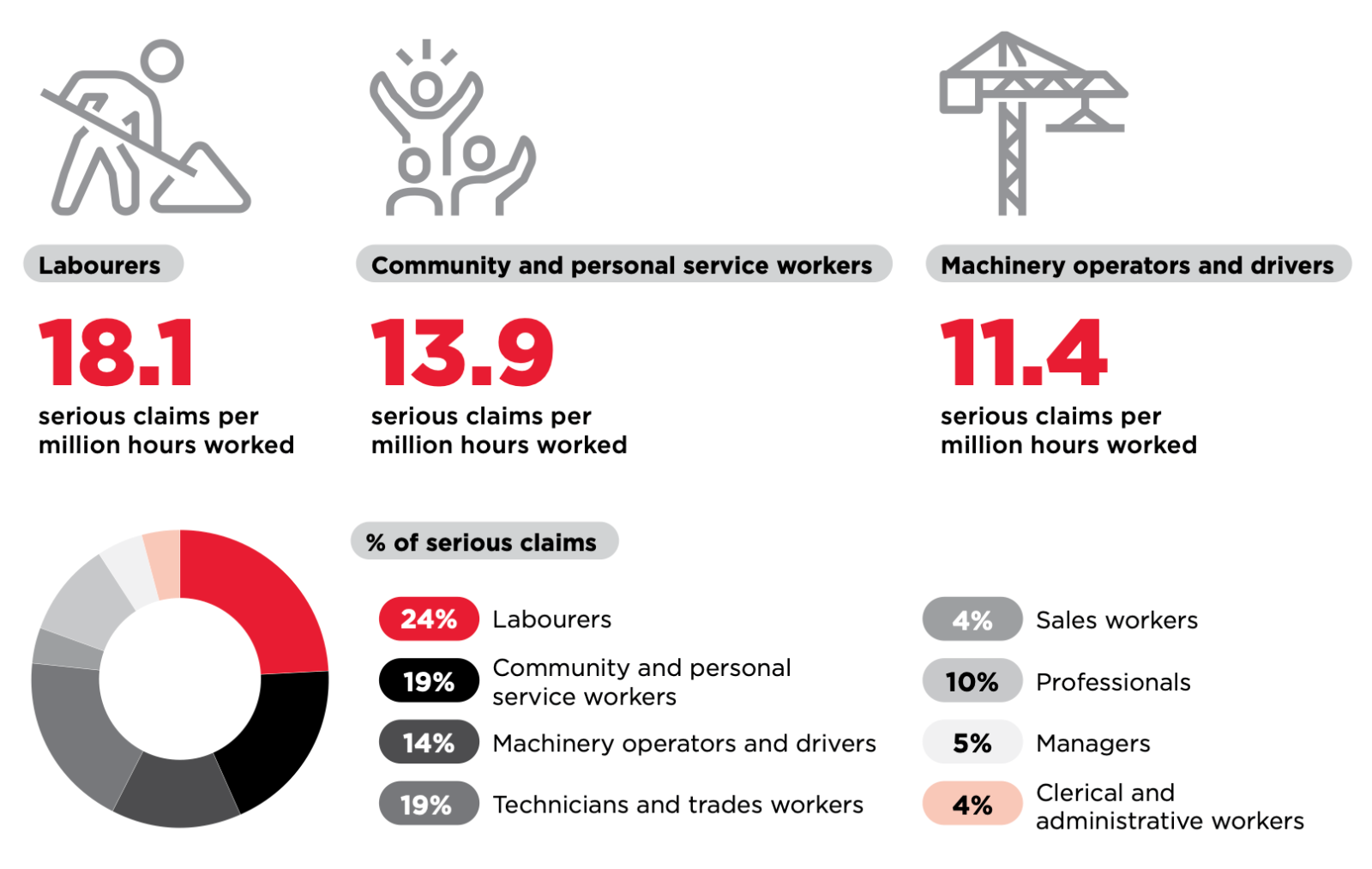 |
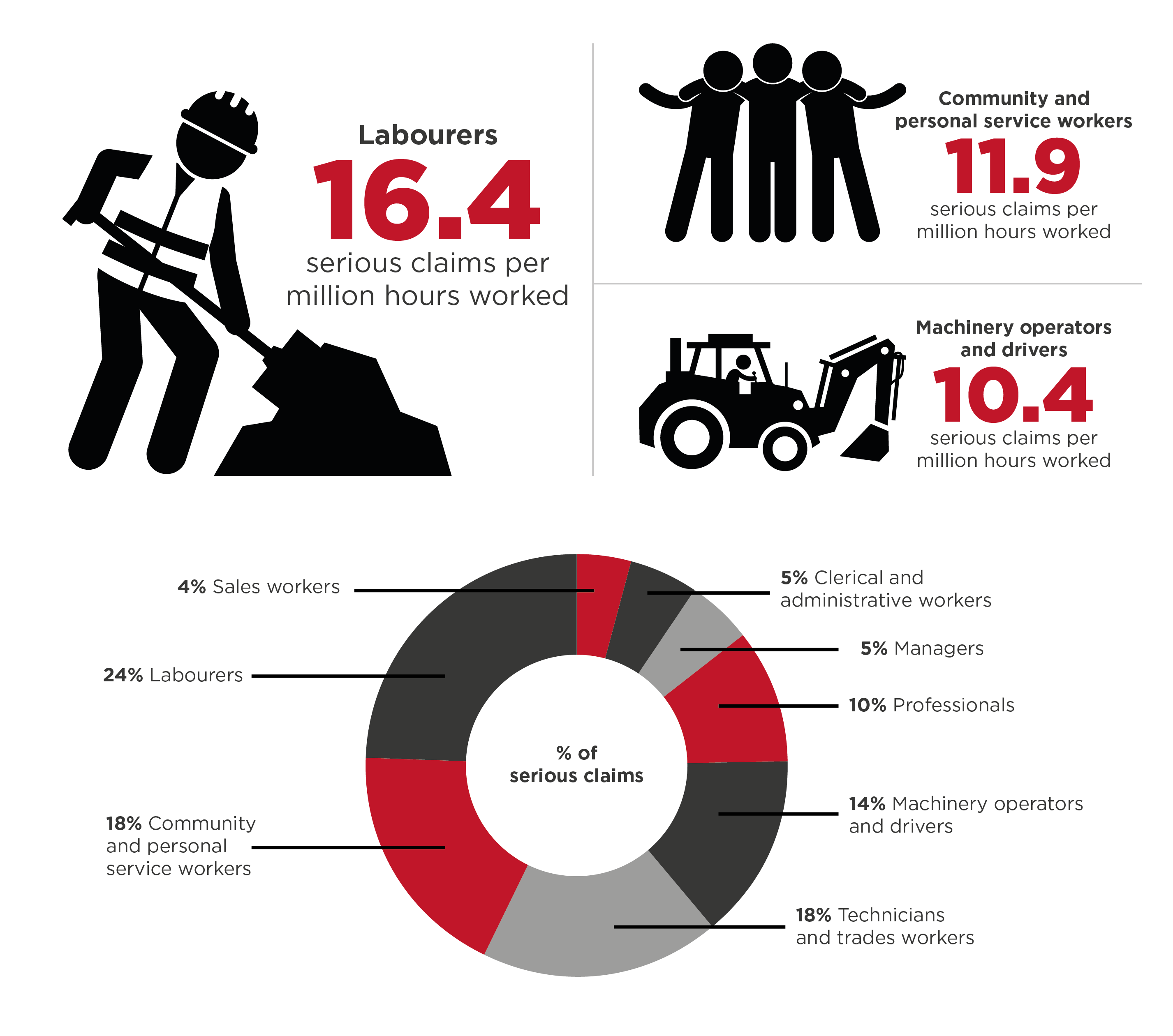 |
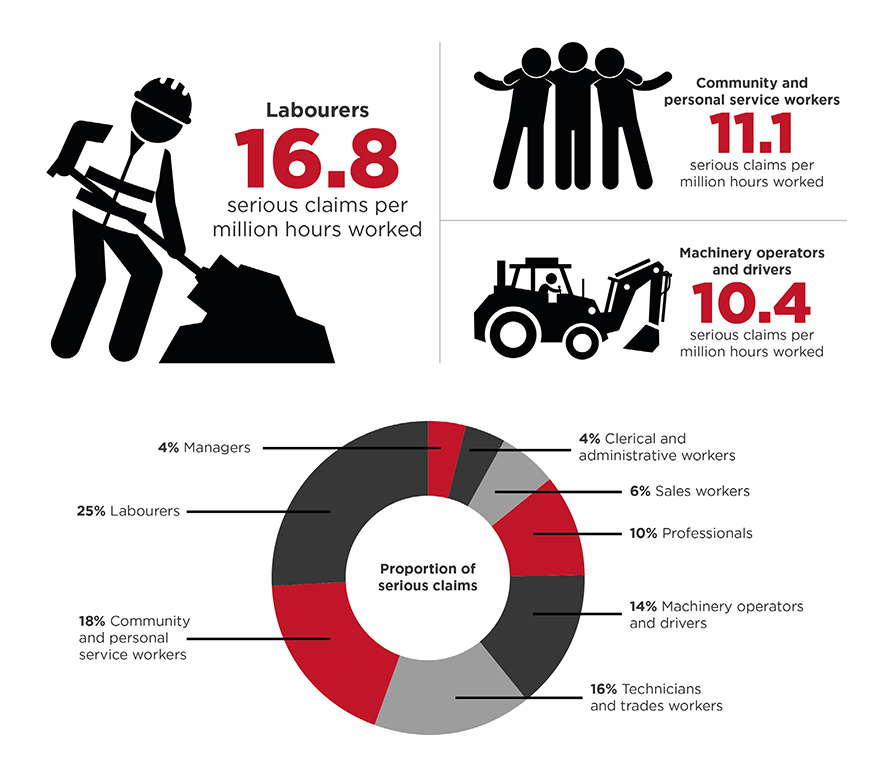 |
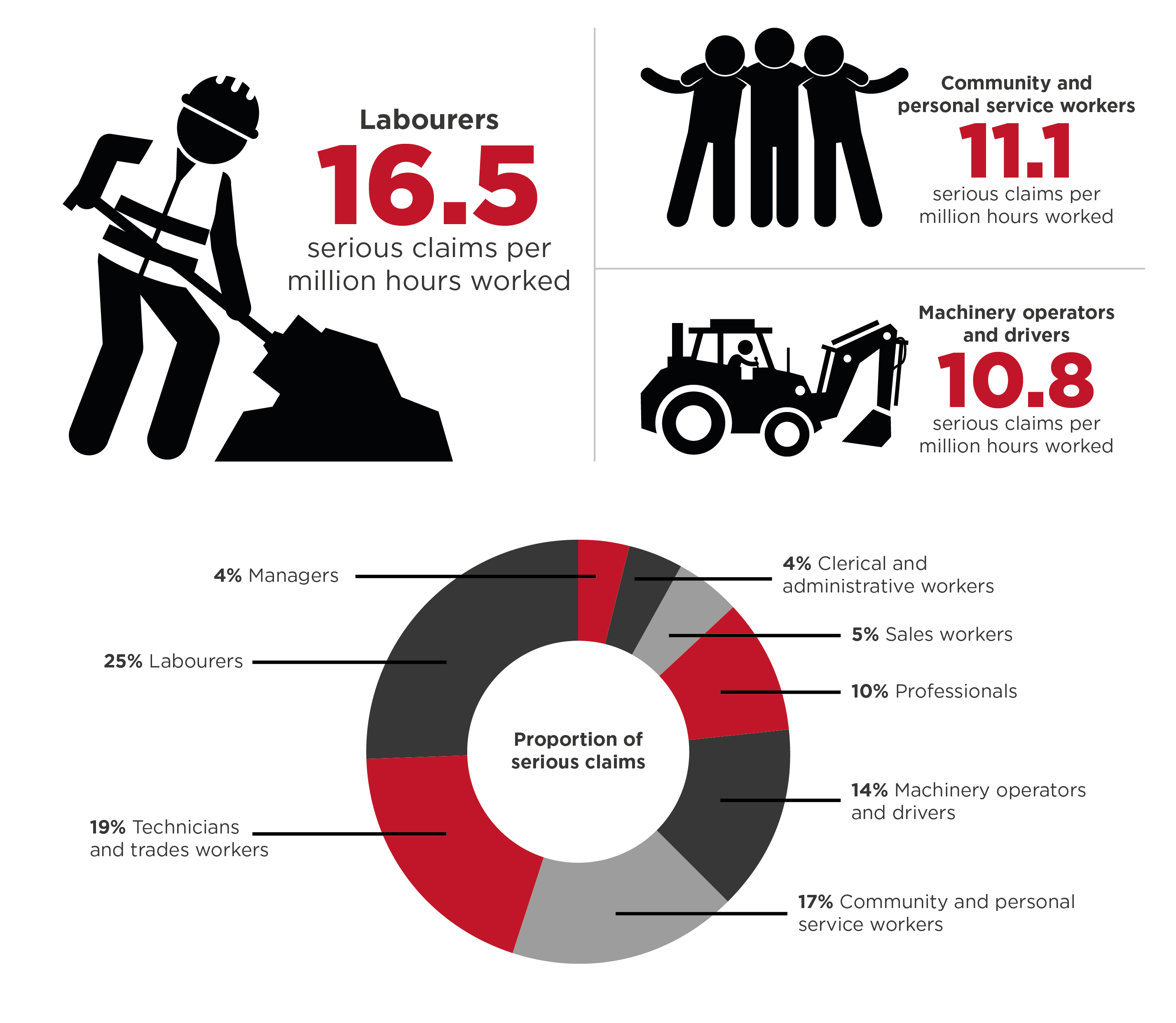 |
We'll continue to monitor the SWA’s release of updated information and amend the figures accordingly. Make sure to subscribe to our newsletter below so you don’t miss the update.
AIMS' Note on Buying PPE and Workwear
- Hazard assessment: Identify the specific hazards you will likely be facing in your work environment. Consider potential risks such as chemical exposure, falling objects, loud noises, electrical hazards or biohazards. This assessment will guide you in selecting the appropriate PPE for the job.
- Appropriate materials: Different materials offer various protective qualities. Consider flame-resistant (FR) materials for fire hazards, chemical-resistant fabrics for handling hazardous liquids and high-visibility options for work in low-light environments.
- Compliance to occupational safety standards: Opt for PPE that meets the pertinent Australia Standard (AS), although some brands -- especially imports -- will have other compliance markings such as ANSI, OSHA, ANSI, NIOSH, oSA etc. Look for certifications on the product label to ensure the equipment has undergone rigorous testing.
- Proper fit and comfort: Proper fit is crucial for both comfort, dexterity and protection. Ill-fitting clothing can snag on machinery or restrict movement, potentially creating additional hazards. Choose sizes that allow for layering in cold weather without being overly bulky and consider adjustable options for items like hard hats or respirators.
- Maintenance and replacement: Inspect PPE before each use for signs of wear, tear or damage. Follow (and factor in) the manufacturer's instructions for cleaning and storage. Some materials may require specialised laundering, while others can be machine-washed. Check for durability to ensure the clothing can withstand frequent use and cleaning. Replace damaged or expired PPE immediately to guarantee your safety.
- Training: Ensure you and any employees understand how to properly use, wear, adjust, maintain and store PPE and workwear. Improper use can negate its protective benefits.

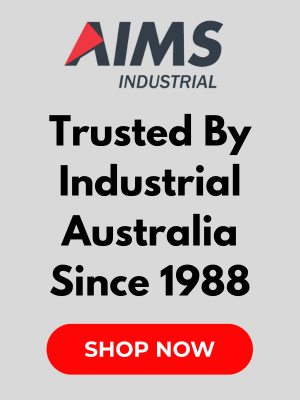
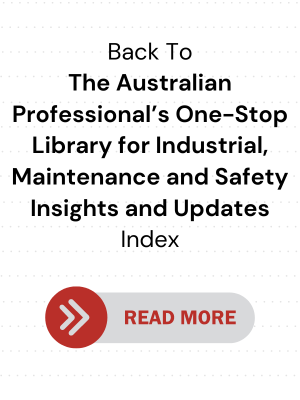
.png)